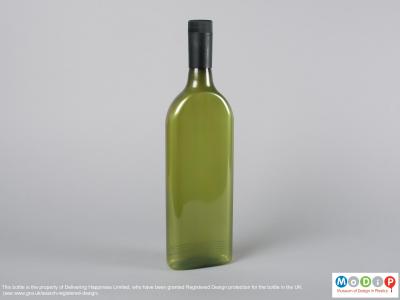Process: Similar to injection blow moulding whereby the preform is first injection moulded and this is then transferred over to the blow moulding station to be inflated with air. However, in this process, the plastic material is stretched vertically (in the axial direction) by the core rod as, simultaneously, it is stretched horizontally (circumferentially) by the injection of hot air. The tube expands to fill the cavity and once cooled is removed from the mould and the pinch point trimmed.
This biaxial stretching of material increases the tensile strength, gas barrier properties, drop impact and reduces the overall weight of the container.
Introduced: The idea of reheating a thermoplastic material and then stretching it to enhance its properties was first employed in extruded sheet in the 1930s. Stretch blow moulding a preform was developed in the late 1970s.
Plastics: Commonly polyethylene terephthalate and polypropylene
Marks: An injection gate – see injection moulding.
Tooling cost: High
Production volume: High
Uses: Carbonated soft drinks bottles, cooking oil containers, toiletry product packaging, agrochemical containers.

